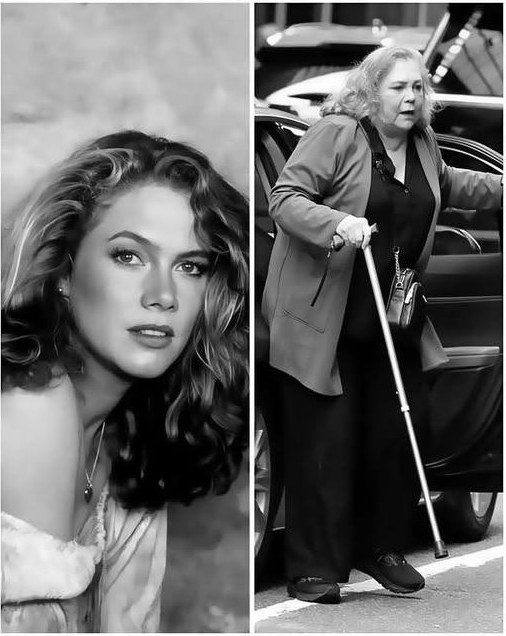Early 1990s, Kathleen Turner’s commanding screen presence began to change, not because of fading talent, but because her body turned against her. Diagnosed with rheumatoid arthritis at the peak of her stardom, she faced not just chronic pain and physical transformation, but harsh judgment from an industry slow to understand invisible illnesses. Known for her sultry voice and magnetic performances in films like “Body Heat” (1981), “Romancing the Stone” (1984), and “Peggy Sue Got Married” (1986), Turner had redefined what it meant to be a strong, sensual female lead. But when her joints swelled, her posture stiffened, and her voice became strained, she was met with cruel speculation rather than compassion.
Audiences whispered that she had let herself go. Studios stopped calling. She once said in an interview with The Guardian, “People thought I was drinking or not taking care of myself. I was in so much pain, I could barely move, and all they saw was a change in appearance.” For someone who had once been hailed as a screen siren, the pressure to look flawless became another burden added to the physical agony she endured.
Turner’s condition required over a hundred medical appointments a year. Her days were filled with cortisone injections, physical therapy, and powerful medications. At one point, she needed a cane to walk and had to give up film roles that demanded physical stamina. Yet she refused to give up performing. Rather than retreat from the public eye, she turned to theater, a space where the depth of performance outweighed surface expectations.
Her appearance in the Broadway revival of “Who’s Afraid of Virginia Woolf?” in 2005 was a seismic moment. She took on the emotionally draining role of Martha, embodying a character raw with rage, vulnerability, and complexity. Critics and audiences alike were stunned by her intensity. It wasn’t a comeback, it was a declaration. Her body might have changed, her voice might have thickened, but the soul of her artistry remained undiminished. Turner herself said in an interview with The New York Times, “I’m not what I was at 35, but I’m still learning. Acting saved my life. It gave me focus and got me out of bed when the pain was too much.”
On stage, she found strength in redefining how the world saw her. She didn’t hide the toll the illness took on her body. She embraced it. When audiences watched her perform, they weren’t just witnessing a seasoned actress, they were witnessing a woman who had learned how to live with pain, to carry it with grace and fire.
What makes Kathleen Turner’s journey so inspiring isn’t just her physical endurance but her refusal to allow judgment to define her. The media’s commentary on her appearance was relentless during her lowest moments, but she met it head-on. She spoke openly about the disease in interviews, challenging the shame that often surrounds chronic illness. In her memoir “Send Yourself Roses,” co-written with Gloria Feldt, she wrote, “I had to fight not only my body but also the assumptions people made about me. But once I accepted what was happening, I stopped being ashamed.”
On June 19, as she celebrates her birthday, what resonates most is her ability to remain passionate, outspoken, and defiant in the face of silence. She turns 71 today, and her voice, weathered yet powerful, never went away, it only grew stronger.
Credit goes to respective owner-
